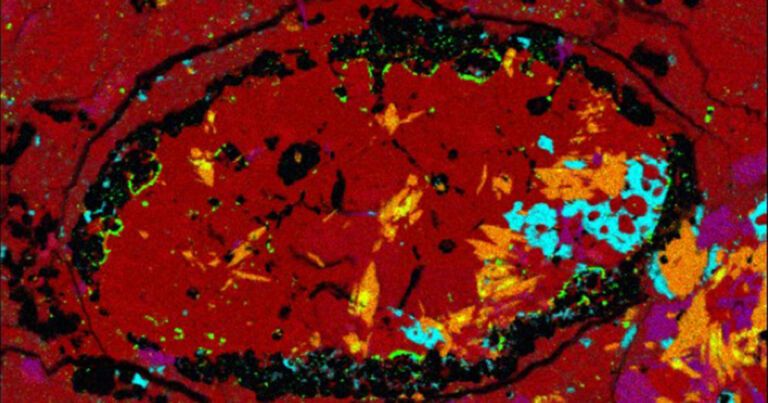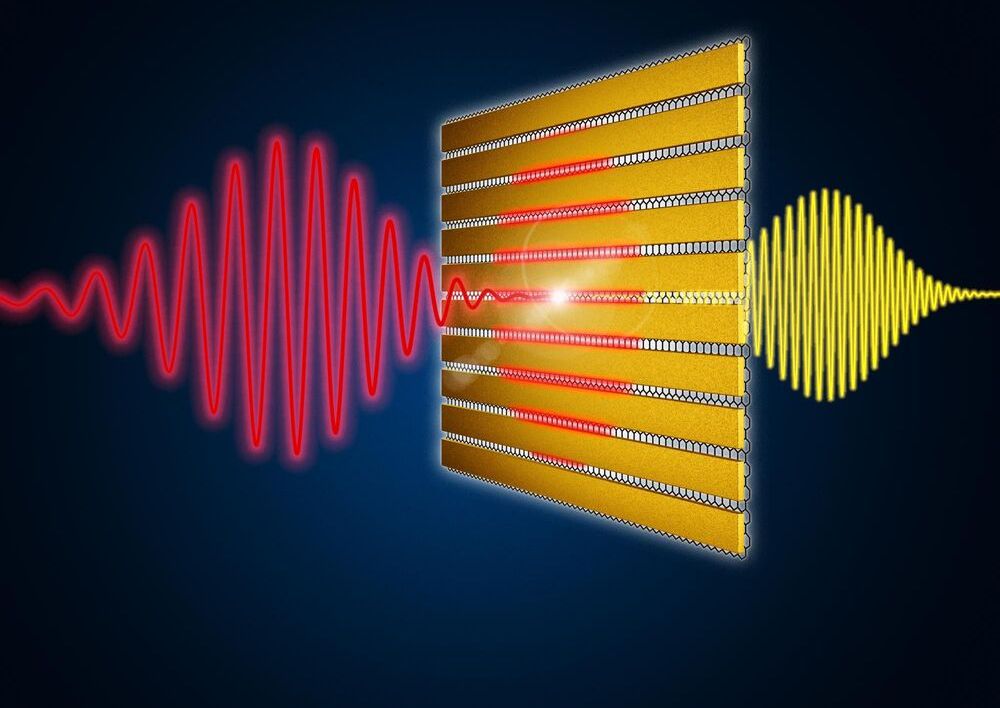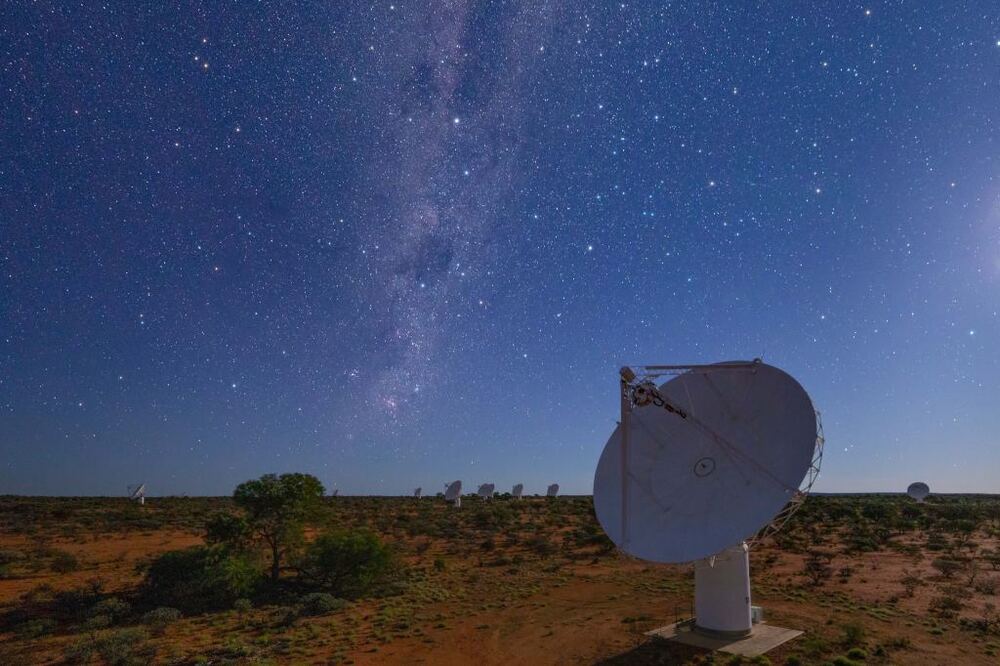It started as a regular, recreational drone flight. It ended with the rescue of a woman who was lying motionless on the beach. #dronesforgood
Honorable Mentions
One more scientific brilliance this year is the use of light in neuroscience and tissue engineering. One study, for example, used lasers to directly print a human ear-like structure under the skin of mice, without a single surgical cut. Another used light to incept smell in mice, artificially programming an entirely new, never-seen-in-nature perception of a scent directly into their brains. Yet another study combined lasers with virtual reality to dissect how our brains process space and navigation, “mentally transporting” a mouse to a virtual location linked to a reward. To cap it off, scientists found a new way to use light to control the brain through the skull without surgery—though as of now, you’ll still need gene therapy. Given the implications of unauthorized “mind control,” that’s probably less of a bug and more of a feature.
We’re nearing the frustratingly slow, but sure, dying gasp of Covid-19. The pandemic defined 2020, but science kept hustling along. I can’t wait to share what might come in the next year with you—may it be revolutionary, potentially terrifying, utterly bizarre or oddly heart-warming.
Summary: Gene expression patterns in four regions of the prefrontal cortex are distinctly different in those who have been diagnosed with PTSD compared to those who have not. Major differences were seen in interneurons, which inhibit the immune system and microglia in the central nervous system. Findings shed light on why women are more likely to experience PTSD and compound a link between post-traumatic stress and a dampening of the immune system.
Source: Yale.
A post-mortem analysis of brain tissue from people who had been diagnosed with post-traumatic stress disorder (PTSD) may help explain enduring mysteries about the disorder, such as why women are more susceptible to it and whether a dampened immune system response plays a role in dealing with stress, a team headed by Yale University researchers has found.
Its happening again, it seems.
Just a Drip
Losing air on a space station sounds perilous, but Roscosmos maintains that the crewmembers are safe and that the situation is under control. The leak is very small, it says, and backup systems are in place if needed.
“We have had this leak for quite some time, the rate is very small, nothing has happened,” Roscosmos Program Director Sergei Krikalev told the Russian news agency Interfax. “One of the leaks was found and reduced, but it still remains.”
Video on the gene edited mosquitos to be released in Florida.
The U.S. EPA gave the green light to release millions of genetically modified mosquitoes in the Florida Keys in 2021 — here’s what we know.
https://sc.mp/subscribe-youtube.
A 30-year-old in Thailand is turning chicken feathers into food. Sorawut Kittibanthorn got his idea from the 2.08 million tonnes of chicken feathers dumped each year. He hopes his creations can help reduce feather waste produced every day.
Support us:
https://subscribe.scmp.com.
Follow us on:
A long-gone dwarf planet-sized object likely produced unusual crystals that crashed into Earth.
over the past few years, general electric (GE) has been developing the ‘haliade-X’ — the world’s most powerful offshore wind turbine. GE says that just one rotation of the turbine, which stands at a total height of 260 meters (853 ft), could power a UK household for more than two days. the haliade-X features a 13 MW or 12 MW capacity, 220-meter (722 ft) rotor, a 107-meter (351 ft) blade, and digital capabilities that help customers perform remote diagnostics, improve time management (less time at sea), and optimize operations.
On the electromagnetic spectrum, terahertz light is located between infrared radiation and microwaves. It holds enormous potential for tomorrow’s technologies: Among other things, it might succeed 5G by enabling extremely fast mobile communications connections and wireless networks. The bottleneck in the transition from gigahertz to terahertz frequencies has been caused by insufficiently efficient sources and converters. A German-Spanish research team with the participation of the Helmholtz-Zentrum Dresden-Rossendorf (HZDR) has now developed a material system to generate terahertz pulses much more effectively than before. It is based on graphene, i.e., a super-thin carbon sheet, coated with a metallic lamellar structure. The research group presented its results in the journal ACS Nano.
Some time ago, a team of experts working on the HZDR accelerator ELBE were able to show that graphene can act as a frequency multiplier: When the two-dimensional carbon is irradiated with light pulses in the low terahertz frequency range, these are converted to higher frequencies. Until now, the problem has been that extremely strong input signals, which in turn could only be produced by a full-scale particle accelerator, were required to generate such terahertz pulses efficiently.“This is obviously impractical for future technical applications,” explains the study’s primary author Jan-Christoph Deinert of the Institute of Radiation Physics at HZDR. “So, we looked for a material system that also works with a much less violent input, i.e., with lower field strengths.”
For this purpose, HZDR scientists, together with colleagues from the Catalan Institute of Nanoscience and Nanotechnology (ICN2), the Institute of Photonic Sciences (ICFO), the University of Bielefeld, TU Berlin and the Mainz-based Max Planck Institute for Polymer Research, came up with a new idea: the frequency conversion could be enhanced enormously by coating the graphene with tiny gold lamellae, which possess a fascinating property: “They act like antennas that significantly amplify the incoming terahertz radiation in graphene,” explains project coordinator Klaas-Jan Tielrooij from ICN2. “As a result, we get very strong fields where the graphene is exposed between the lamellae. This allows us to generate terahertz pulses very efficiently.”
CSIRO has made a detailed radio survey of the southern hemisphere, and discovered a million new galaxies.
Although radio astronomy has been around since the 1930s, it is only in recent years that astronomers have been able to make high-resolution maps of the radio sky. Sky maps are difficult for radio telescopes because radio antennas need to be focused on an extremely small patch of sky to capture images in high resolution. But with modern antennas and computer processing, we can now scan the sky quickly enough to map the heavens in a reasonable amount of time.
In the northern hemisphere, the most detailed radio sky maps have been done by the Very Large Array (VLA). In the 1990s the VLA made the first full-sky surveys of the northern sky. After its upgrade in the 2000s, the observatory began the VLA Sky Survey (VLASS), which has mapped nearly 10 million radio sources.
The location of the VLA lets it observe about 80% of the sky, but it cannot see the southern sky very well. For that, you’d need a radio observatory in the southern hemisphere. Fortunately, there is now a powerful radio telescope array in Australia, and it has recently made a detailed radio map.









